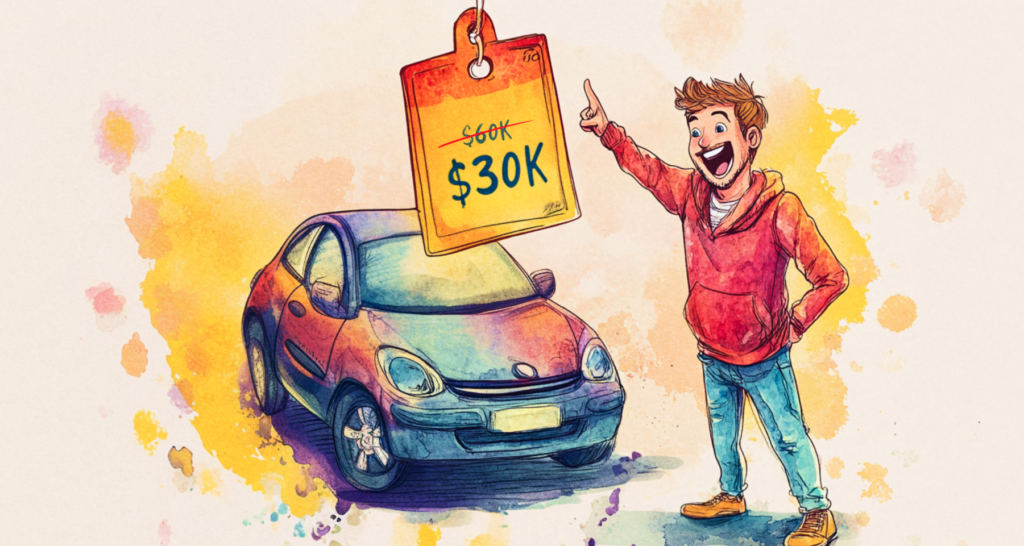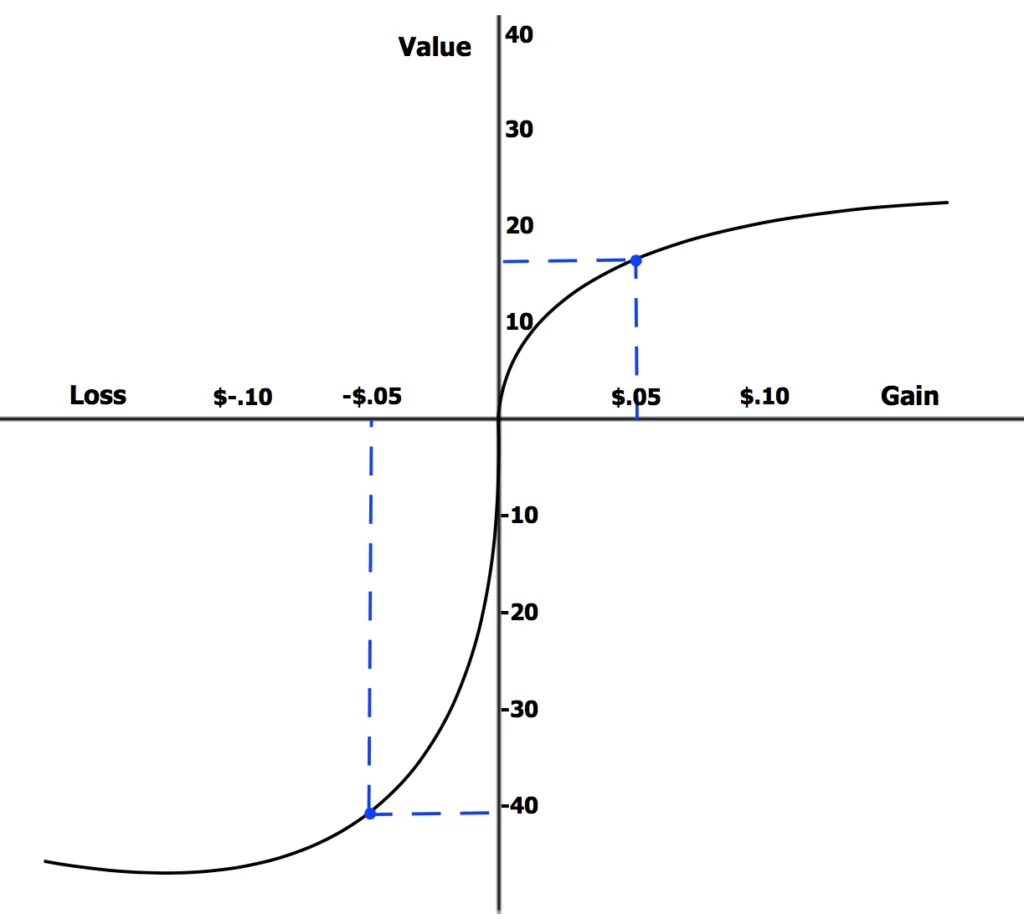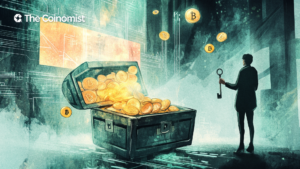Trading Psychology: How to Avoid Falling Victim to Your Own Biases

The most successful traders aren’t always the smartest. More often, those who excel are the ones who understand psychological traps, manage their emotions, and maintain rationality under pressure.
On this page
Achieving success in trading isn’t about having a high IQ. It’s about developing patience, persistence, discipline, and emotional control. A trader’s mental state is the key factor influencing their decisions and long-term performance in the market.
Understanding how your brain reacts to market fluctuations can help you avoid psychological traps, develop better self-discipline, optimize risk management, and shift from emotion-driven decisions to a more strategic trading.
Types of Traders from a Psychological Perspective
Traders react differently to the same market events. For example, when Bitcoin’s price drops sharply, some panic and sell, fearing further losses, while others see an opportunity and buy in, confident that the price will rebound.
From a psychological standpoint, traders generally fall into three main categories:
- Impulsive traders act without a clear plan, making rash decisions without considering the consequences. This often leads to emotion-driven trading and significant losses.
- Cautious traders carefully analyze the market and their financial situation before making a trade. They tend to be more emotionally stable and have strong self-discipline. However, they sometimes hesitate too much, missing out on high-risk, high-reward opportunities.
- Practical traders find a balance between risk-taking and caution. They have a solid understanding of risk management and trade with confidence. This ideal trader type knows how to assess risk realistically while always evaluating the potential profitability of a trade.
You might recognize yourself in one of these categories. Understanding your psychological tendencies can help you reflect on how your mindset influences your trading performance.
Now that we’ve established the importance of psychology in trading, let’s take a closer look at the most common psychological traps traders fall into. We’ll break them down individually to understand how to avoid costly mistakes and improve trading strategies.
Confirmation Bias
One of the most common psychological traps in trading is confirmation bias—the tendency to seek out information that reinforces pre-existing beliefs while ignoring facts that might contradict them. This can lead to poor decision-making and excessive trading based on a distorted view of the market.

Imagine you hold a large amount of ETH. Instead of conducting thorough research and objectively assessing risks, you actively seek out information that supports your belief in Ethereum’s long-term value.
You follow tweets and articles that praise Ethereum as a strong investment while ignoring opposing views or warning signs. As a result, you trap yourself in a self-confirming cycle, unwilling to consider a broader perspective.
By filtering out key market data, you limit your ability to make informed decisions. Ultimately, this bias can lead to avoidable losses that could have been mitigated with a more open and balanced perspective on the market.
Availability Heuristic
The availability heuristic is another common psychological trap in crypto trading. It occurs when traders base decisions on easily accessible or memorable information rather than conducting a thorough market analysis. This bias often comes into play when hyped-up news or social media trends create a misleading sense of opportunity.

Source: prismic.io
Here’s how it plays out in practice.
If a particular altcoin goes viral on X, gaining attention through influencer promotions or memes, traders may assume it has massive potential. Instead of analyzing its fundamentals, technology, or real-world use cases, they jump in based on hype. This often leads to investments in unstable assets that lack long-term value, increasing the risk of financial losses.
The availability heuristic also impacts traders during market surges. For example, if Bitcoin experiences a sudden price spike, some traders may falsely believe that such rapid gains are common and easy to replicate. This misguided optimism can push them into high-risk trades driven by emotion rather than market analysis.
This bias often leads traders to chase short-term trends while overlooking long-term investment strategies that tend to be more stable and sustainable.
Anchoring Effect
The anchoring effect is a common cognitive bias in crypto trading, where traders fixate on an asset’s initial purchase price, even when market conditions shift. A prime example of anchoring bias occurs when an investor buys Bitcoin at $100,000 during a bull market peak. Even if the price plummets, they remain mentally attached to that $100,000 benchmark, believing the asset will recover to its original value. This clouds judgment and prevents strategic decision-making.

Source: scribbr.com
Traders influenced by anchoring often hold onto assets despite clear sell signals, convinced that prices will eventually return to their original entry point. This mindset causes them to ignore updated market data and expert analysis, failing to recognize that previous price levels may no longer be realistic in the foreseeable future.
This effect can significantly impact financial performance, as traders struggle to adapt to market changes. As a result, they may miss opportunities to minimize losses or overlook profitable trades at lower price levels.
Another common bias is fixation on net worth. As a trader, you constantly experience PnL (profit and loss) fluctuations. For example, if your capital is $100,000 and you lose $20,000, it’s easy to fixate on the loss and feel that recovering that amount will be difficult. This mindset can lead to over-cautious behavior and risk avoidance, even when profitable trading opportunities are available.
Ultimately, the anchoring effect skews perception, making it difficult to evaluate market conditions objectively and adjust trading strategies accordingly.
Loss Aversion
Traders tend to feel the pain of losses more intensely than the satisfaction of gains. This psychological bias often leads to poor decision-making, such as holding onto losing positions for too long or exiting profitable trades too early out of fear.
For instance, a trader buys Bitcoin at $100,000, expecting further growth. However, when the price drops to $80,000, they refuse to sell, hoping for a rebound. Instead of cutting losses and adjusting their strategy, the trader clings to the position, avoiding the reality of the loss even when market indicators suggest a continued decline.

Source: wikimedia.org
Loss aversion is driven by the psychological pain of acknowledging losses, making it difficult to make rational trading decisions. Traders often perceive lost money as more significant than potential gains.
For example, a trader might sell a coin after a 10% gain too early, fearing they’ll lose profits. At the same time, they might hold onto an asset that has dropped 20%, hoping it will recover. This is a classic case of loss aversion.
As a result, traders may hold onto underperforming assets for too long, miss out on profitable opportunities, and experience unnecessary emotional stress. This often leads to irrational decision-making, even when the market clearly signals the need for action.
Loss aversion can impact traders even during profitable periods. For instance, if a trader’s profit reaches $N but later drops to $N/2, they may refuse to take profits until the balance returns to $N. Objectively, there is no actual loss, but psychologically, it feels like one.
Overconfidence Bias
Traders often overestimate their knowledge and skills, leading to excessive risk-taking and overtrading. This psychological bias, known as the overconfidence effect, occurs when investors believe they can predict market movements based on limited experience or past successes.

A classic example of overconfidence bias was seen during Bitcoin’s bull run in 2021. Many traders, overestimating their abilities, aggressively increased their positions, convinced that BTC’s rally would never end. As Bitcoin surged past $60,000, they grew overconfident, believing the uptrend was unstoppable.
This overconfidence and excessive optimism caused traders to overlook real risks. They failed to consider the possibility of a market correction and kept increasing their positions, expecting prices to continue rising. When the market eventually corrected and Bitcoin fell below $30,000, these traders suffered heavy losses, having underestimated the risks involved.
Overconfidence can lead to an exaggerated sense of skill and an underestimation of risk, significantly increasing the likelihood of financial losses.
This Article Kicks Off a Series on Psychological Traps in Trading
Recognizing psychological biases and understanding how they affect decision-making can help you minimize mistakes, avoid emotional trading, and develop a more disciplined strategy. Trading isn’t just about numbers and charts, it’s also about controlling emotions and making rational choices.
Since trading psychology is a vast topic, we’ve divided this series into multiple parts for better clarity. In upcoming articles, we’ll explore key biases such as fear and greed, recency bias, herd mentality, framing effects, and more.
Each new article in this series will be announced in our Telegram channel. Subscribe to stay informed!
The content on The Coinomist is for informational purposes only and should not be interpreted as financial advice. While we strive to provide accurate and up-to-date information, we do not guarantee the accuracy, completeness, or reliability of any content. Neither we accept liability for any errors or omissions in the information provided or for any financial losses incurred as a result of relying on this information. Actions based on this content are at your own risk. Always do your own research and consult a professional. See our Terms, Privacy Policy, and Disclaimers for more details.

























